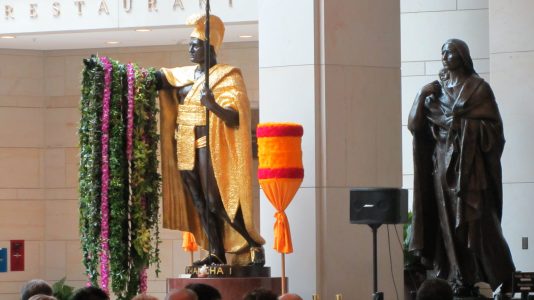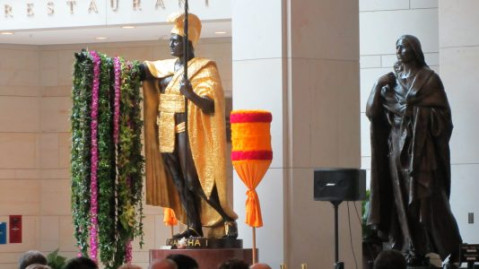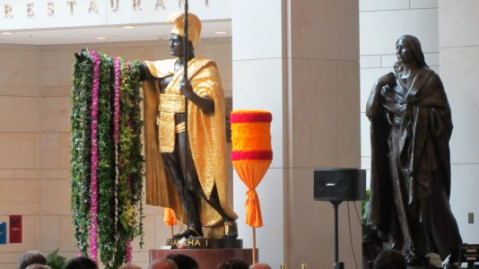Widgetized Section
Go to Admin » Appearance » Widgets » and move Gabfire Widget: Social into that MastheadOverlay zone
The Need to Incorporate Tribes into Public Administration Education
The views expressed are those of the author and do not necessarily reflect the views of ASPA as an organization.
By Lorinda Riley
December 10, 2018
For the first time Congress will see Native American women, Sharice Davids (D-KS) and Deborah Harland (D-NM), representing their states in the US House of Representatives. Kevin Stitt (R-OK) will also become the nation’s first Native Governor. Native Americans, individually and as a tribal community, have become more politically active. This activity is, in part, due to the unprecedented era of nation building that tribal nations have entered.
However, many public administrators who work with tribal officials for the first-time lack basic knowledge about tribal sovereignty and authority.Most have a general idea that tribes retain some type of control over their territories, but when pressed are unable to say exactly where authority comes from and whether a specific policy would unconstitutionally infringe upon tribal self-determination.

A handful of scholars are working to incorporate tribal issues into public administration. At least one book on intergovernmental relations now includes a chapter on tribal governments and another book focuses on State-Tribal Collaboration. But while these efforts are promising, it’s still not enough. To prepare future public officials to work effectively with tribal nations the field of public administration needs more courses and more faculty that understand these issues.
Tribes, as sovereigns that pre-exist the formation of the US, have inherent powers of self-determination. The federal government, thus, acts as a trustee to beneficiary tribes. This trust responsibility stems, in part from the many treaties signed between tribes and the US government, and in part from the Marshall Trilogy, three cases penned by Chief Justice John Marshall that lay out the boundaries of federal Indian law, which endures to this day. The Trilogy adopted the so-called doctrine of discovery that imposed certain limitation on indigenous rights due solely to Western discovery while reserving to tribes rights as domestic dependent nations over all internal matters.
Although under Executive Order 13175 the federal government is required to consult with tribal nations prior to instituting a policy that has a tribal implication most states do not have a similar requirement. As a result, state and local agencies that do interact with tribal officials have the potential for conflict unless they have sufficient knowledge of tribal governance.
President Nixon, in an Address to Congress, ended Termination, a dark era of Indian policy, and ushered in an era of Tribal Self-Determination where tribal nations were encouraged to take on the administration of their own affairs. Most Americans are aware of tribal gaming operations, but what they frequently do not know is that the revenues from these operations go to support all tribal services. Unlike states, tribes do not have a tax base,so the revenues from economic development make up the majority of their governmental budget.
In order for tribes to operate Class III casinos they must to enter into a Memorandum of Understanding with the State. These MOUʻs frequently detail a myriad of coordinated services and shared costs between the tribe, state, and county such as additional funding for local law enforcement, voluntarily payment of taxes, and the maintenance of ingress and egress. Not only does this greatly reduce the revenues that the tribe can then put towards their own services, but it requires significant interaction with state and local governments.
Public safety is another area of frequently coordination.Because of the complex laws that govern jurisdiction on tribal lands in order to ensure the full safety of citizens, neighboring jurisdictions must work together. Many local and tribal governments have entered into MOUs that provide for cross-deputization allowing both governments to increase patrols and reduce response times.
The field of public administration needs to start including tribal issues into its foundational curriculum. Just like public finance is seen as an important part of the basic public administration curriculum even though not all public administors will work in these areas, so too should tribal issues be incorporated in the basic curriculum.
Tribal issues are not simply issues of diversity or cultural sensitivity. Tribal issues are based on the trust relationship that our nation has with indigenous people as articulated in the UN Declaration on the Rights of Indigneous People,the Marshall Trilogy, and even the US Constitution. To skip over this topic or to mention it as an aside does our students (and future administrators) a disservice.
Incorporating tribal issues need not be challenging. A few well selected articles, ideally by indigenous authors, a guest lecture by a tribal official, or incorporating tribal case studies will add depth to any course. In regions with large indigenous populations, programs can do more through hiring indigenous faculty,creating stand-alone tribal focused courses, adding practicum sites, and organizing site visits. These courses should not just target indigenous students, but should be described as a way for public administrators to increase their knowledge in an emergent area of administration. The field of public administration has an opportunity to be at the forefront in preparing our students for the diversity of future administration.
Author: Lorinda Riley is a professor at the University of Hawai‘i, West O‘ahu where she teaches justice administration and indigenous governance. Lorinda is a former tribal liaison for the Department of Homeland Security and holds a master’s in American Indian Studies, Juris Doctorate, and Doctorate of Juridical Science in Indigenous Peoples Law and Policy. She can be reached at [email protected].






 (8 votes, average: 4.38 out of 5)
(8 votes, average: 4.38 out of 5)
Brian Bray
December 10, 2018 at 5:08 pm
I agree that there needs to be better understanding of native tribal issues within public administration scholarship. The lack of research on tribal public administration is truly shocking. This is to the detriment to both indigenous and non-indigenous students.
However, it seems that it would be difficult to do what you are recommending until there was a better infrastructure behind it – such as an ASPA Section on Native American Governance. It would seem difficult to incorporate this into education when the educators are ignorant of the issues themselves.
There really should be a concerted effort on this subject at some point.